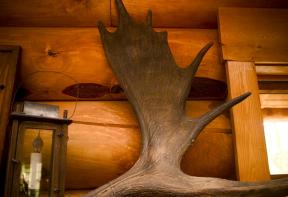Choosing logs to build a cabin
Decide on whether you want the rugged look for your new retreat
Building with logs is another way to stay local, although nowadays many log homes are prefabricated in plants many states away. Yet despite a few drawbacks, log construction is both a nostalgic favorite (remember those Lincoln Logs and, for that matter, the original Abe Lincoln boyhood cabin) and still an effective way to build a sturdy cabin.
Log cabins are typically constructed by local builders who specialize in the technique. Many kinds of trees can be used for a log cabin, so long as they grow tall and straight. Cedar, fir, pine, spruce, hemlock, and balsam are commonly used, although Western red cedar is probably the choice more often than the others.
While there are a slew of ways to assemble the logs, the most popular process features notched overlapping corners with protruding ends. Our ancestors, including my own great-grandfather, favored dovetail corners for their log houses, but they require especially high-quality timber, which is not so readily available anymore, at least not at prices most of us are willing to pay. Dovetail corners also demand a level of construction skill and finesse that similarly jacks up the cost.
In any event, the logs are usually delivered to the builder’s yard when they’re still green and can be easily peeled and sawed. The logs are cut to fit, then preassembled in a simple, rectangular shape, at which point the openings for doors and windows are cut into them (ideally toward the middle of the logs because log cabins derive their strength from the linked corners). Roof beams, rafters, and purlins (horizontal pieces that support the rafters) are added. The components are numbered, and the structure is dismantled and shipped off to your site.
Because log cabins tend to settle a lot during the first few years following construction, careful builders include contraction sleeves for the doors and windows and jacks for the posts. They also make sure that roofs overhang the buildings far enough to protect the logs from excessive rainfall, although the extended eaves make the cabin darker inside than you’d get from the roof on an ordinary frame cabin. On the brighter side, the finished surfaces both inside and out are the same beautiful material.
Jump to a section
- Page 1 : Building with logs
- Page 2 : Choosing a log shape
To leave a comment, please log in












No comments